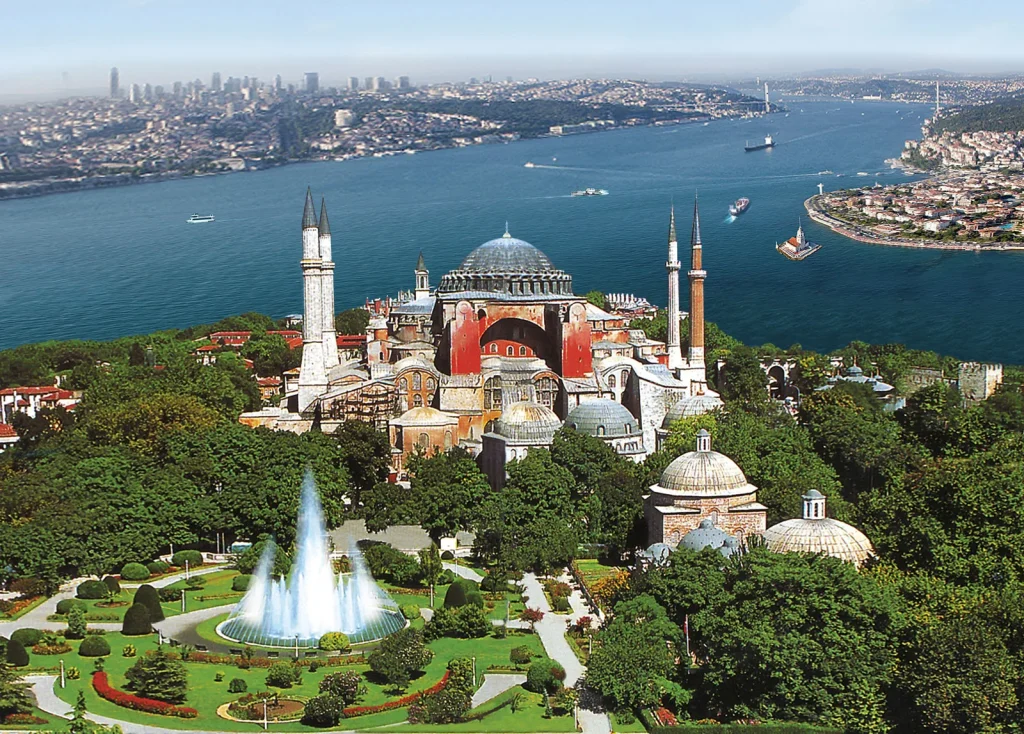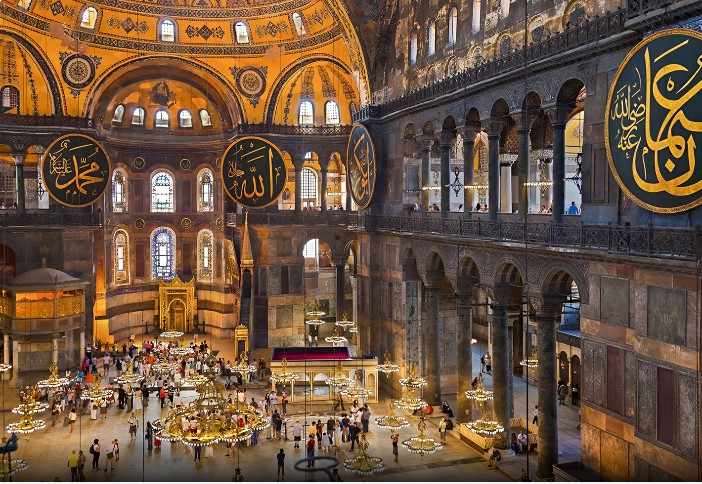Hagia Sophia: A Symbol of East and West Through the Ages
Hagia Sophia: A Symbol of East and West Through the Ages

Through of the Hagia Sophia began in 532 AD by the order of the Byzantine Emperor Justinian I, the emperor ordered the construction of a church that could rival all the older churches, and two architects did the work, Anthemios of Tralles and Isidore of Miletus.
Hagia Sophia’s most famous feature is its huge dome, the largest dome is more than 30 meters (100 feet) wide centuries of history, the Ayasofya is a structure built to be more than just architecture, an incredible monument of historical design, a symbol of religious evolution and a helluva sight that draws visitors from around the world, we Studying the architecture of this seemingly eternal structure in the crucible of history enriches the outlines of the Ayasofya , which is now observed as a mosque even though it was not originally built as a mosque.
The Hagia Sophia is a marvel of Byzantine engineering.

The construction and more than 55 meters (180 feet) high. They dominated Constantinople for centuries with this dome. And by means of well-placed windows, a novel technique was employed to create an object of subtle perception that the dome seemed lighter than air, and was open enough to let in daylight, and that it had retained for more than fourteen centuries.
And its interior is labyrinthine with natural light coming in from around the high walls, the walls are covered with mosaics mixed with gold, which makes the glittering interior even brighter, its pillars and arches are strategically placed to create a sense of open heart, and a sense of grand ideal place for prayer. was set up to give.
It was divided between Christians and Muslims, after the fall of Constantinople to the Ottomans in 1453 it was rebuilt as a mosque, the Ottomans then added minarets, tiling it with gold mosaics with Islamic calligraphic and geometric designs, the Hagia Sophia mosque was then Built when many of the city’s churches were converted to mosques, these changes made the Hagia Sophia a major symbol of Ottoman conquest power and the arms of Islam.
The founder of the Republic of Turkey, Mustafa Kemal Atatürk, converted the Hagia Sophia into a museum in 1931, although this decision was unpopular with Turkey’s Muslim scholars, and as part of a secularization effort, the Hagia Sophia is a UNESCO World Heritage Site as a cultural site under the Historic District of Istanbul and similar sites. was added to the list of places; The designation includes both Ayasofya and Topkapi Palace, which have been nominally the property of their benevolent foundation since 1936.
In 2013, the Turkish government moved to allow Islamic prayer inside the Hagia Sophia, a decision that led to a domestic and international debate, with many seeing it as another step towards converting the Hagia Sophia into a mosque, eventually becoming a full mosque again in 2020. comes back However, the dispute over the fate of Hagia Sophia continues to this day.
To put it very simply, Hagia Sophia is a cross of several different cultures, which everyone knows is a historical monument touched by the hands of Byzantine, Roman and Greek architecture, but it must be accepted that the Ottomans also have their own artistic hand here.
A Symbol of Tolerance: So we can see that Hagia Sophia is a monument to several empires, one of which is a church, another is a mosque, etc., where both Christians and Muslims have been worshiping for centuries, and which has given rise to controversy, but interfaith. This importance is maintained to protect the honor.
Best for Ages: From artists to architects, the Ayasofya has attracted thousands of tourists and been inspired by this place just by the grandeur of the structure, and the impact of its historical significance.
